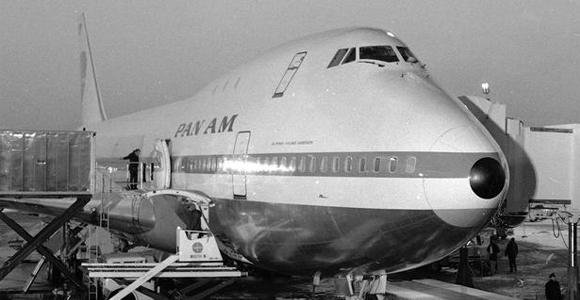When Did the Widebody Era Really Begin? — #TBT Week of January 11


In the spirit of #TBT (“Throwback Thursday,” not Brazil’s Tabatinga Airport) FlyerTalk takes a look back at the events that helped shape modern aviation. Here are just a few moments from history that changed the face of the industry during the week of January 11.
January 11, 1959
Already a mainstay in commercial aviation, Boeing continued to expand the 707 line with the first flight of the 707-320 Intercontinental. The new variation had a flight range of 6,000 miles and could accommodate 189 passengers. A special version of the new aircraft would ultimately be selected as Air Force One, entering service for the Kennedy administration in 1962. The 707-320 Intercontinental would continue to serve as dedicated presidential aircraft for more than 20 years.
January 12, 1970
The widebody era officially opened at London Heathrow Airport (LHR) with the successful landing of a Boeing 747’s proving flight. The 747-121 — originally dubbed Clipper Victor but renamed Clipper Young America for the inaugural flight — was operated by Pan Am from John F. Kennedy International Airport (JFK). Ten days later, the airline would begin regular passenger service between the two major airports.
January 13, 1974
After much debate between the cities of Dallas, Fort Worth and Arlington, Dallas/Fort Worth International Airport (DFW) officially opened for business. Over the ensuing 40 years, the airport would expand to include five terminals and seven runways, ultimately becoming the ninth busiest airport in the world by passengers in 2014.
January 14, 1958
Pioneering “around-the-world” travel, QANTAS became certified as the first non-American carrier to fly across the U.S. Utilizing the Lockheed Super Constellation, the Australian carrier christened the Southern Cross Route, flying from Melbourne across the Western Hemisphere and U.S. to reach London. This path mirrored the Kangaroo Route, which flew over the Eastern Hemisphere via India.
January 15, 2009
Forever known as the “Miracle on the Hudson”, US Airways Flight 1549 successfully ditched into the Hudson River after a bird strike disabled both engines following takeoff from LaGuardia Airport (LGA). Upon losing engine power and after eliminating all other landing options, Captain Chelsea “Sully” Sullenberger and First Officer Jeffrey B. Sikes made the decision to glide the A320-214 into the river. All 155 souls onboard survived the crash, with only 78 passengers sustaining injuries. Today, the aircraft is on display at the Carolinas Aviation Museum.
January 16, 2013
All Nippon Airways Flight 692, operated on a Boeing 787 Dreamliner, was forced to make an emergency landing after the pilots reported a battery alarm signal and a burning smell onboard. Later that day, the FAA would ground all Dreamliners until a solution could be identified. All 50 Dreamliners in operation around the world were affected by the battery malfunction.
January 17, 2008
In the first operational incident involving the Boeing 777, British Airways Flight 38 landed short of a runway at LHR after losing engine power. There were no fatalities, and only nine injuries were reported among the 152 passengers. It was later discovered that ice crystals in the fuel were to blame for the engine malfunction. The discovery prompted a redesign of the fuel-oil heat exchanger mechanism in 777 aircraft powered by Rolls-Royce engines. The incident was the first total hull loss, with only five other 777 hull loss incidents since.
[Photo: AP via CBS]





















